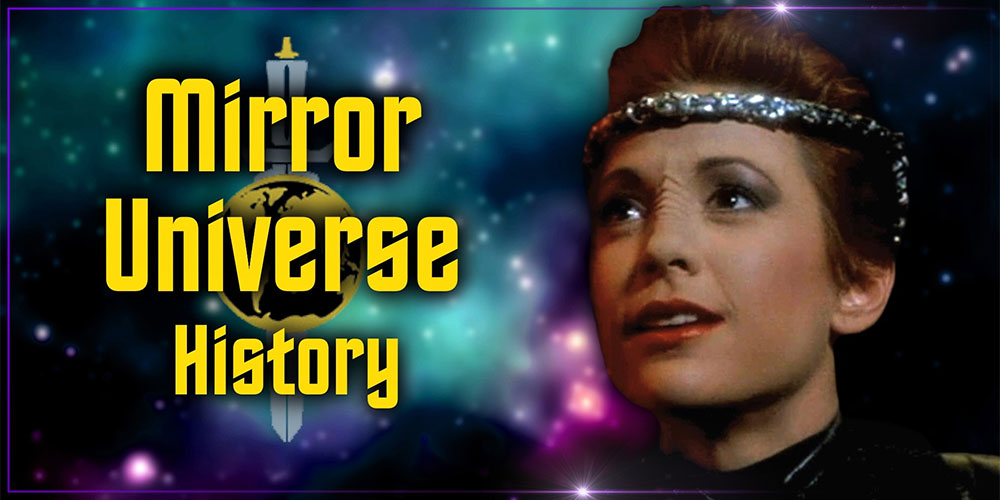Hey guys, In a prior article, I dove into the “science” of the mirror universe, the twisted alternate reality first seen in The Original Series episode “Mirror, Mirror.” In the mirror universe, the United Federation of Planets is replaced with the Terran Empire, and the mirror universe’s inhabitants are seemingly “evil” versions of their prime universe counterparts—sometimes cartoonishly so. Furthermore, the two universes seem to share a special link—what happens in one timeline affects the other. This special relationship causes historical events, ships, people, and other things to mirror each other, even across centuries. So, what is the point where the two universes’ histories diverged? And what could have led humans down a path towards conquest rather than peaceful exploration? Today I’ll examine some of the proposed answers to these questions.
Dispelling Misconceptions
As we explore various theories as to when the two timelines separated—that is, initially, prior to their “drifting apart” mentioned in Discovery—it’s important, I think, to dispel what I believe are misconceptions surrounding the mirror universe’s origins and its history.
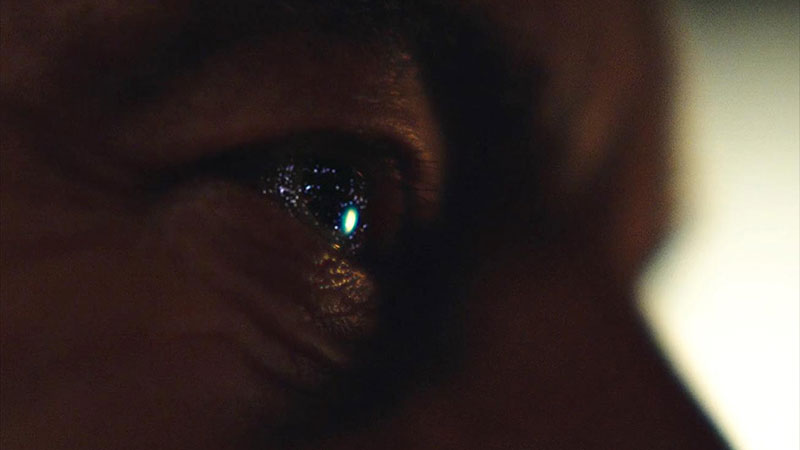
Misconception #1 – The mirror universe “must-have” different physical constants.
I think this is a huge misunderstanding of how alternate realities ought to work in fiction. There have been some popular pieces of fan speculation floating around the Internet…such as on a certain website that starts with an “R”—that say things like, “Terrans are aggressive because the speed of light is slower, leading to lower photosynthesis and more competition for food.” There are a number of reasons this is just…dumb, to put it bluntly. Firstly, changing the speed of light or any other physical constant would cause everything we know about the universe to completely unravel.
The nuclear binding energy that gives rise to fusion inside stars, the absorption of wavelengths on the electromagnetic spectrum…Now, Michael Burnham makes a big to-do in Discovery about the “light” in the mirror universe feeling different—“the cosmos has lost its brilliance,” she says—and it’s stated that Terrans have one biological difference from regular humans, which is that they are more sensitive to bright light. This is implied to be an evolutionary change possibly dating back millennia, but I’m not totally convinced…I think it’s better, narratively, to imagine Terrans as humans who have gone down a different path given different cultural circumstances. This adaptation could simply be a difference in preference, with statements of biological determinism and light having different properties being metaphors and exaggerations. But we’ll come back to this later.
Misconception #2 –The mirror universe is a timeline where Surak never influenced Vulcan history.
Surak is, of course, a Vulcan philosopher from the 4th century AD who transformed his planet’s culture by promoting logic and the suppressing of violent emotions. Surak dying as an infant is one difference suggested in issue #14 of The Best of Trek fanzine as part of a conjectural history of the mirror universe. The only problem with it is that, well, mirror Vulcans still make frequent references to logic and suppress their emotions—for the most part. So…yeah, this one’s just wrong.
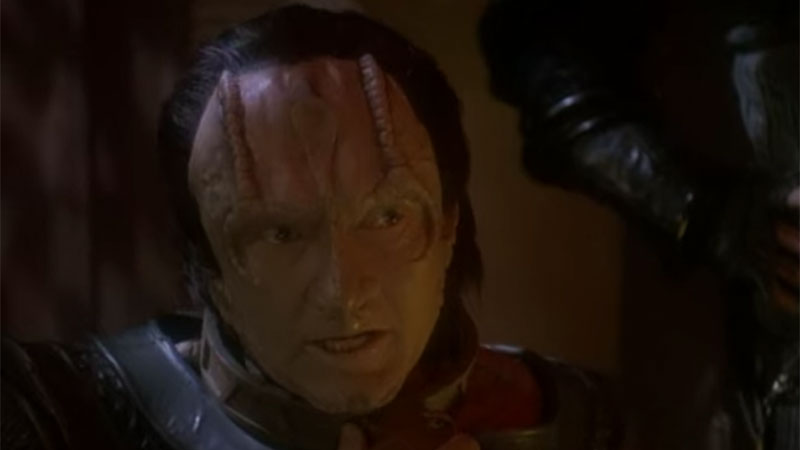
Misconception #3 – The mirror universe Bajorans were never visited by the Prophets.
The reason this misconception is thrown around is that the Bajorans we see in the Deep Space Nine crossover episodes are quite secular. This has raised questions as to whether the Prophets intervened in Bajoran history and whether the Orbs of Bajor ever existed on the other side. But as Ronald D. Moore commented in a 1997 AOL chat, “The intention was that there were Orbs on the other side, but they had been lost or destroyed or something and that they had passed into legend for the Bajorans.” Mirror Garak also makes a reference to pagh, the spiritual force inherent in all sentient beings according to the Bajoran religion. And while the Bajoran Wormhole has not been discovered in the mirror universe, undoubtedly the Prophets still inhabit it or at least did at one point in time. Also, we shouldn’t discount the possibility that the Bajorans became secular at least partly as a result of joining the Klingon-Cardassian Alliance, as the Klingons and Cardassians are explicitly atheistic cultures. Speaking of religion…
Misconception #4 – Terrans “must-have” never had the Abrahamic faiths to shape their civilization.
This line of thought comes from the fact that, in a deleted scene from “In a Mirror, Darkly,” Jonathan Archer makes a reference to “the gods”—plural—and indeed, the Terran Empire’s Roman iconography could indicate these gods are the Greco-Roman classical pantheon. Indeed, we know that in the Star Trek universe, the Greek gods were aliens from the planet Pollux IV, so it’s interesting to consider what might have happened if their visit had included an alternative outcome of, say, the Trojan War. As a matter of fact, references to classical literature in the non-canon novel Dark Mirror by Diane Duane indicate the earliest difference between the universes was the ending of The Iliad, in which Achilles kills King Priam instead of showing him mercy.
But as far as the Judeo-Christian heritage, well, eliminating it from Earth history would completely change the course of Western civilization. You might say, “but that’s kind of the point,” except, not really. The fact that we speak English, the names of towns and countries and continents and even people, the Islamic Golden Age of Science, et cetera…too much would be different if the Abrahamic faiths never existed. The existence of Christianity, Judaism, and Islam is also foundational to the works of William Shakespeare, works which mirror Phlox remarks are “equally grim in both universes.” The Bible is even among examples of Terran literature in Dark Mirror, though we never find out if it contains any differences. Gene Roddenberry seems to have bought into the notion that Christianity led to the fall of the Roman Empire, an idea popularized by historian Edward Gibbon and exemplified in The Original Series episode “Bread and Circuses.” However, most modern scholars believe this view is not accurate, or at least not the full picture. This brings me to my next point…
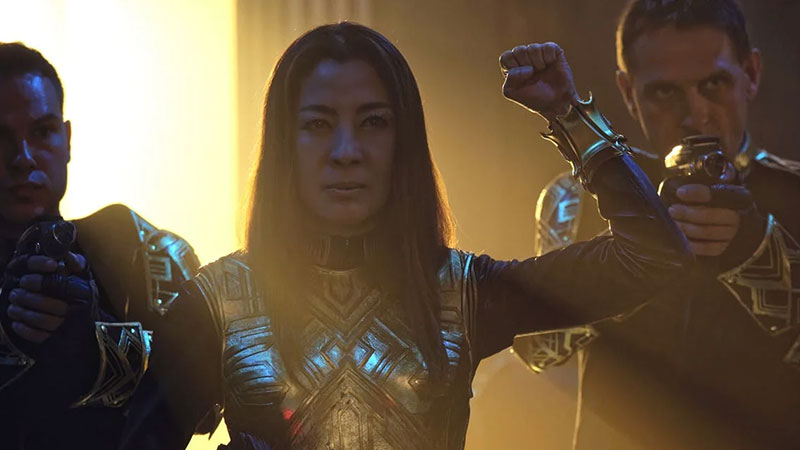
Misconception #5: The Terran Empire “must be” a literal continuation of the Roman Empire.
There are a number of reasons this is unlikely. First off, all empires are bound to fall. When the Western Roman Empire fell, it was just over 500 years old, but even if you include the fall of the Byzantine Empire in 1453, it’s still less than 1500 years—meaning if the Terran Empire’s origins are in 27 B.C., it would be over 2,200 years old in “Mirror, Mirror.” This is rather excessive. Indeed, the average lifespan of an empire in Earth’s history is about 250 years. Once again, an unbroken, continuous rule of Rome would overwrite the entire history of the world, from ancient times to the Age of Sail to the Industrial Revolution and beyond.
The fall of Rome was necessary for lots of developments that are foundational to the world as we know it today, and given the number of people who have counterparts in both universes, I think much of this history is the same if not slightly altered. I think it’s much more likely that the Terran Empire is, as I’ve said before, borrowing symbols from Rome and declaring itself a successor of the Roman Empire. Many empires have done this throughout history—the Ottomans, the “Holy Roman Empire” in the 9th through 19th centuries A.D., Mussolini’s Italy—and so I think the same would apply to the Terrans.
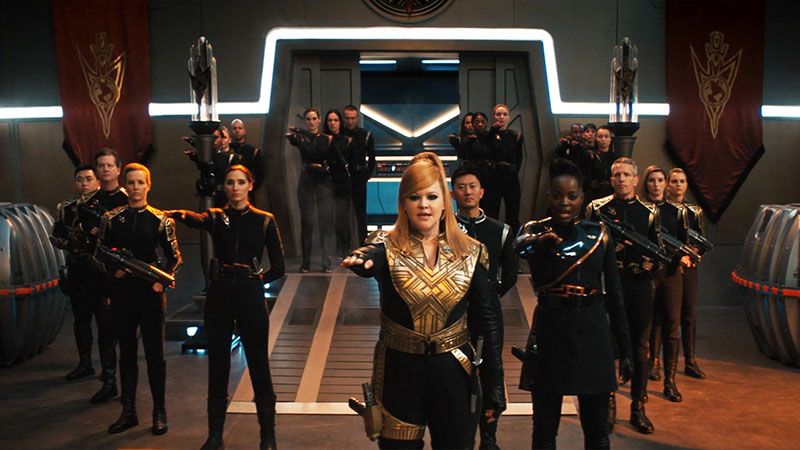
Misconception #6: The mirror universe is a world where the European Age of Enlightenment never occurred.
The truth is, the Enlightenment itself is not really a singular movement founded by a handful of thought leaders, but it’s an amalgamation of different ideas in various fields that resulted from trends in preceding eras. From the days of antiquity to the Middle Ages to the Renaissance, the development of Western culture—influenced as well by innovations from the Islamic world and other places—can trace its roots back to seeds planted in the ancient world, as I discussed earlier. Many of the ideas associated with the Enlightenment—liberty, tolerance, fraternity, constitutional government, separation of church and state—may strike as being un-“mirror universe”-like because of their positive attributes. But a closer look at the Enlightenment can help us make sense of this.
Indeed, democracy was not necessarily one of the central tenets of Enlightenment thinking, and true equality certainly wasn’t either. Many such as Voltaire despised democracy; he even advocated nations be led by a “philosopher-king” whose decisions were based on reason. And we know Voltaire certainly had an affinity for monarchs given all the time he spent with Frederick the Great…but, not like that, as far as we can tell. Even as rebellions against monarchies occurred, such as in France and the Americas, the result of these revolutions was not the kind of “freedom and democracy” that we conceptualize today. No, these revolutions produced republics—republics that didn’t have universal suffrage and, in the case of America, still practised SLAVERY for nearly a century. Even to this day, academics characterize the United States as less of a democracy and more of an oligarchy. The Enlightenment, while it did popularize the scientific method and advocate some progressive ideals, also produced scientific racism, European colonialism, and other evils. The selfishness Terrans exhibit could be seen as a hyper-individualist attitude rooted in an extreme reading of Enlightenment philosophers like John Locke. Even later developments like socialism and fascism trace their ideological roots to the Enlightenment. In fact, if the Terran Empire has always been fascist in the way Michael Burnham describes, the empire can’t have begun earlier than the 1930s. Speaking of fascism…
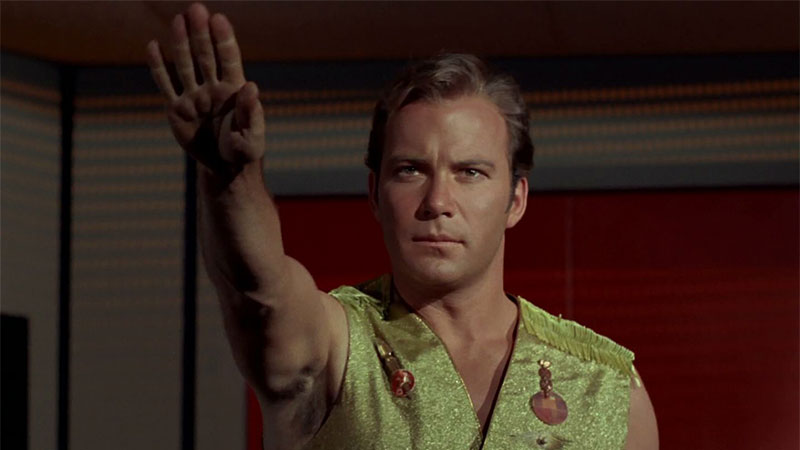
Misconception #7: The mirror universe is a world where the Axis Powers won World War II.
There’s really nothing to support this, honestly. The gist of this argument is that, because the Terran Empire is fascist, it must be descended from a fascist regime that existed in real life…like Nazi Germany. Again, the problem with this is that, in a Nazi victory scenario, you would have so many vast changes to a global society that it wouldn’t even really mimic what we see in the mirror universe. No one’s speaking German—and don’t make any witty comments about the universal translator! Not to mention that you know, the Nazis wanted to exterminate non-Aryans. Some speculate that the mirror universe could descend from a timeline where Edith Keeler, the 1930s pacifist demonstrator we meet in “The City on the Edge of Forever,” lives. As we see in that episode, if Keeler doesn’t die in a car accident at a particular juncture in history, she will go on to lead a movement that keeps the U.S. out of the war, inadvertently resulting in a Nazi takeover of the world—a grand demonstration of the moral imperative that fighting the Nazis entailed. But “The City on the Edge of Forever” already shows us a timeline where this happens, and in it, Starfleet just flat out doesn’t exist. Plus, even if it’s a The Man in the High Castle situation, well…the Nazis don’t even hold on forever in that scenario.
Misconception #8: The mirror universe is a world where Khan and the Augments won the Eugenics Wars.
I’m including this one not so much because I don’t think it could be true, but because there’s a misconception that if Khan and the Augments won the Eugenics Wars, then everyone on Earth would become Augments. This is simply not true. And in fact, we’ve seen Terrans and prime universe humans fight—it’s a relatively equal match. So, I don’t think they’re enhanced in any kind of way. Even if the Augments did win the Eugenics Wars, really what that would entail is that they would have shaken up Earth’s political scene—which is something that happened to a limited extent in the prime universe anyway. For more on this, see my video about Khan’s empire. It’s also possible that the Eugenics Wars just didn’t happen in the mirror universe. They may have been influenced by events in the Temporal Cold War as suggested in Christopher L. Bennett’s novel Watching the Clock. Speaking of historical events in Star Trek that involve time travel…

Misconception #9: The prime and mirror universes diverge at the point of First Contact.
Specifically, this misconception is based on the fact that in the cold open of “In a Mirror, Darkly,” we see Zefram Cochrane being greeted by the Vulcans landing in Bozeman, Montana in 2063, promptly followed by Cochrane pulling out a gun and shooting the landing party. Cochrane’s camp subsequently raids their ship, which is hinted at as an origin point for the Terran Empire’s expansion to the stars. Some believe that the predestination paradox presented in the film Star Trek: First Contact, where the Enterprise-E crew encourages Cochrane to still conduct his warp flight after a Borg attack on his complex, could represent a point of divergence in and of itself. In the version of the timeline where the crew didn’t intervene, the theory goes, war-weary humanity is more predisposed to act in a xenophobic manner towards any aliens, and thus our worst impulses would have taken over. The problem with this theory is it presupposes that even in humanity’s darkest hour, the new era that first contact ushers in couldn’t have happened organically without a push from our Next Generation heroes. It also doesn’t address the other claims of differences dating back millennia or the litany of other predestination paradoxes littered throughout Earth’s history, such as in “Time’s Arrow” or “Little Green Men.” This is another issue that we run into when discussing the timeline.
Because of the nature of time travel, two universes that share similar but different histories may have been separated for far longer than it might initially seem. This is the case, almost certainly, with the Kelvin timeline. We see that Nero’s ship emerges from the red matter singularity in the year 2233, meaning it looks like the prime and Kelvin timelines split in this year. However, given that the history of the Star Trek universe, in general, is littered with so many time travel events—including several bootstrap paradoxes that don’t result in forking timelines but rather events in the same continuous timeline—then the Kelvin timeline must have existed separately prior to 2233. Thus, the Narada’s arrival would propagate changes to history in both directions—forwards and backwards. We only perceive effect preceding cause because of our limited three-dimensional thinking. This is, in fact, the description of the Kelvin timeline that Simon Pegg endorses, and it honestly makes sense. It even leaves room for a Kelvin timeline mission to save the humpback whales…
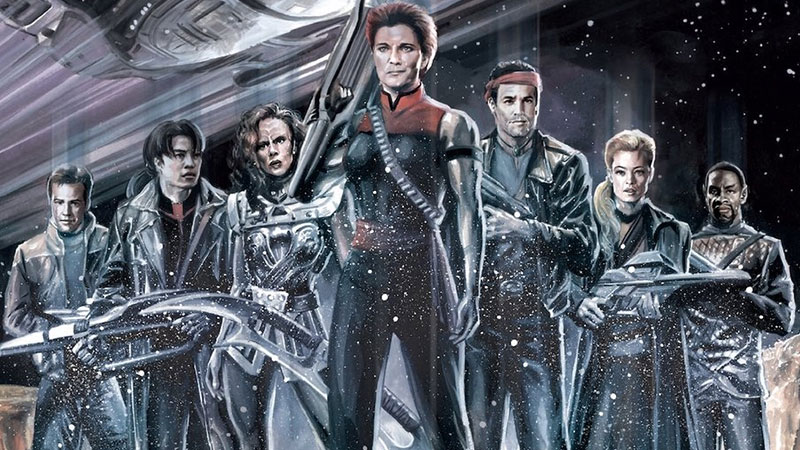
In Conclusion
All of this is to say that, almost certainly, the mirror universe didn’t exactly “diverge” from the prime timeline at any singular moment. Thus, the mirror universe has perhaps always existed separately, parallel but never converging. Only at certain points does it come close enough to mimic the prime universe, albeit through the reflection of a shattered mirror…and this mimicry evidently includes the birth of the same individuals in both timelines across centuries of history.
But of course, realistically, the chances of any single offspring of two parents being born with the same features in two different universes is astronomically low, meaning other sci-fi tropes like “gender-swapping” are perhaps more plausible. But since the two universes do share these similarities, what could be the Terran Empire’s true origins? In the next part of this mirror universe miniseries, I’ll present a theory of my own as to who really founded the Terran Empire.
Watch The Latest Video By Orange River Media Below
I’ll see you in the next video…live long and prosper.
You can find Orange River Media at the links below
- YouTube: https://www.youtube.com/orangeriver
- Twitter: https://www.twitter.com/orangerivernw
- Instagram: https://www.instagram.com/orangeriver.nw
- Facebook: https://www.facebook.com/orangerivernw
- Patreon: https://www.patreon.com/orangeriver

